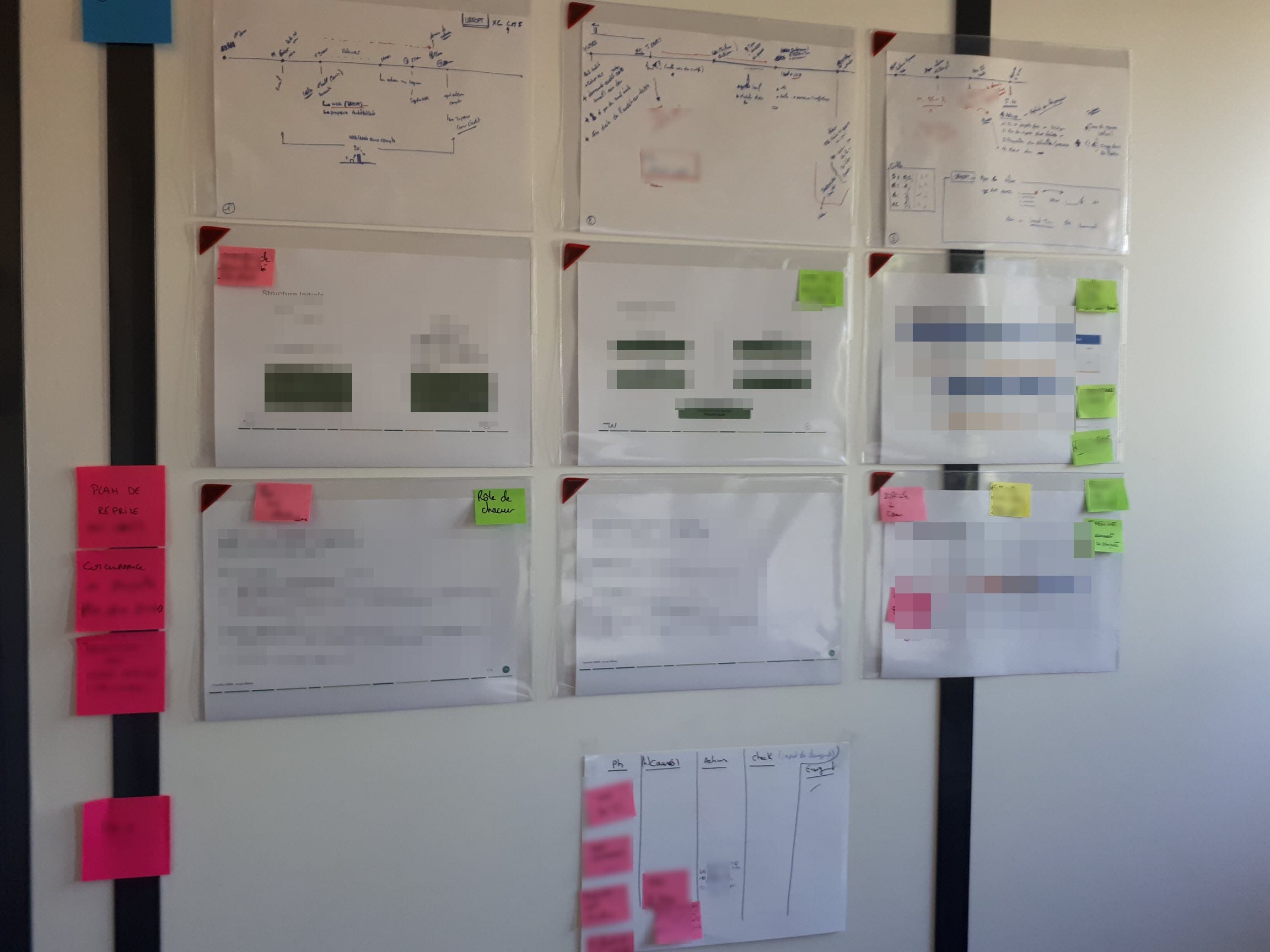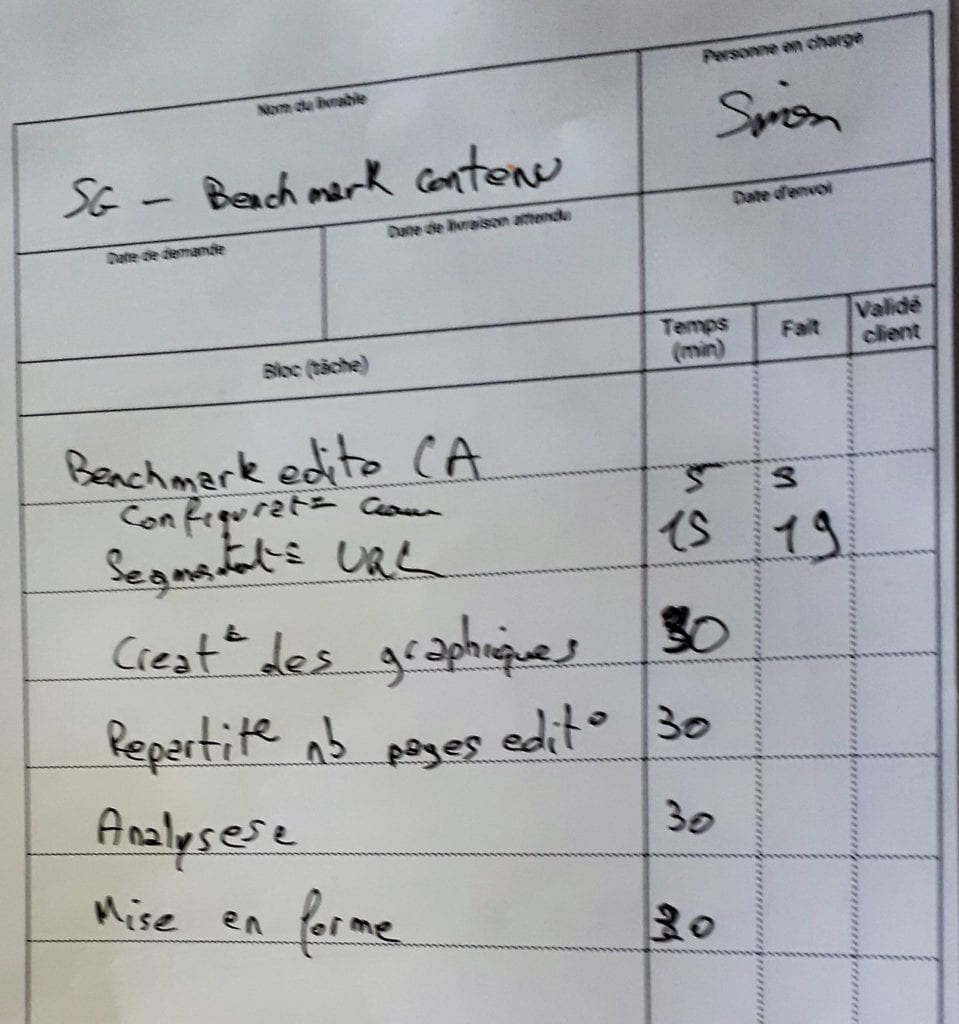
Using lean to gain a competitive advantage
NOTES FROM THE GEMBA – In the web marketing world, a competitive advantage is a matter of life and death for businesses. The author meets a firm that has been leveraging lean to gain one.
Words: Catherine Chabiron, lean coach and member of Institut Lean France
Jonathan Vidor started dabbling in digital marketing when he was in high school in the late 90s. He was designing websites at the time and reaching the highest possible number of visitors became a sort of competition among pals. As he tried to increase the number of hits, he learned plenty about the variables that can impact a site visibility and about playing around with keywords (this at a time when the web economy was still in its infancy).
The expertise he developed gave him another idea: through ads and carefully-selected keywords, he could make money by attracting potential clients looking for goods or services via search engines and re-directing them to commercial websites… in exchange for a commission. At 23, he made his first million. By 2004, he had created his digital marketing startup – JVWEB (more info here) – and led it to become a company with a yearly turnover of €10 million and employing 55 people (their average age is 31).
A dream come true.
SCALING UP IN A COMPETITIVE ENVIRONMENT
Like many startups, JVWEB eventually had to scale up. As Jonathan puts in, “we had reached a stage where we could no longer sign up new customers because our teams couldn’t recruit and deliver as fast as sales.” This slowly led Jonathan to turn to lean thinking.
As I reach JVWEB in Montpellier, in the south of France, I wonder how lean can apply to a company selling web marketing services to web platforms: can you imagine anything more intangible than SEO (Search Engine Optimization) services or advice on Google Adwords? I couldn’t! It will actually take quite a few questions, once on site, for me to grasp what JVWEB’s products are. After all, they were mostly invented after I started to work, at a time when the main tools I used where pencils, erasers and, on rare occasions, the only computer on the floor.
What is interesting about JVWEB’s line of business is that the value provided to the customer can often be tracked and measured, as data on the amount of traffic reaching a website before and after an optimization can be accessed easily. In a nutshell, JVWEB’s job is to provide advice to customers on how to become more visible on the Internet, thanks to an intimate understanding of the ever-changing workings of search engines. (The same is true for social networks, although tracking value there is definitely harder).
Though often ignored or underestimated, the capability to recruit, develop and retain talent and knowledge is a key success factor in most businesses, be they industrial or digital. In a fast-changing world in which once-unknown competitors can take over your market share in a heartbeat, it has become a matter of life or death.
This very scenario recently presented itself to JVWEB, which led Sébastien, who is in charge of sales, to dig deeper into his own trade. As Jonathan and I step into the room, Sébastien shows us how he tracks his leads’ conversion rate (face the bad news, if any, as early as possible) and how he checks each step of the conversion process on a big board, measuring the time it takes and highlighting errors or issues.

Interestingly, to understand why JVWEB had lost an offer they thought they had in the pocket, Sébastien managed to get in-depth feedback that helped him unearth the reasons behind the failure. He also got hold of a competitor’s offer, which he then broke down and analyzed in detail. “We have to learn fast what we can improve: are we clear enough? Are we solving the prospect client’s issues and taking care of her expectations? Do we really understand what those expectations are?”
Competitors are not the only threat JVWEB has to worry about: the customer can also decide to hire or develop internal resources to do just what they do (from SEO to recommendations on ads). This means JVWEB teams are often on the edge of their seats, having to define what key competencies they need to develop further and which knowledge gaps they need to address.
MANAGING KNOWLEDGE GAPS IN DELIVERY
Aymerik, who manages two-thirds of JVWEB deliveries with his teams, has dwelled on this problem for a while. “It would take us nine months to fully train new hires,” Aymerik says. “We sort of assumed that they would learn on the job. And when they were eventually trained, we did not pay enough attention to what they still needed to master.” As a result, training has become a key activity for team leaders at JVWEB. Dojo topics have also been defined, from pure technical mastery to how to prepare and manage a call with your customer. The process of onboarding new hires now takes two months. The recruitment process itself has been successfully “kaizened” by Tiffany, the person in charge of HR, both to reduce lead-time and to clarify how to recognize talent and ad-hoc profiles.
Together with Jonathan and two other members of the management team, Aymerik visited Tier-1 and Tier-2 Toyota suppliers in Japan last year. There, the team was struck by the constant attention to details TPS old-timers showed. The trip made them change their minds about the size of their teams and the role of the team leaders. “After we got back from Japan, we went from large 15-people teams to cells of five account managers and one team leader. Half of the team leader’s time is now assigned to dojos, knowledge development of the team, problem solving and support,” confirms Aymerik. The rather invisible work done at JVWEB has now been made more visible, as I can see it in C1 (the first cell). Lucas is the Team Leader there. Visual management boards highlight the rate of customer satisfaction of the week (NPS – Net Promoter Score), but also ongoing kaizen activities and recent dojo learning points.
“The NPS question is a bit too generic”, Valentine, the C2 team leader, comments. “We now prefer a direct exchange with the customer on the activities of the week to try and highlight what could be improved.” The team can now discuss topics, such as the results of the optimizations made the week before, but also the best timing to send over recommendations, since the customer’s web developers’ availability is a prerequisite for triggering a real Just-In-Time process and avoiding a pile-up of unheeded work.
Another addition to JVWEB’s way of working that resulted from lean thinking and the trip to Japan is that all cells now try to implement a detailed production plan and learn from what could not be produced as planned. As we pore over the details of a typical week’s activity to support a customer, it is obvious to me that the teams have taken lean very seriously and that they are trying to create a regular flow, pulled by the daily tasks required by their customers, (where those tasks play the role of Kanban cards). They have not always succeeded at reducing the work content of such tasks below one hour, which means that they may not yet be capable of digging into the details of each piece of work to significantly reduce variability. They have, however, made great progress along the way… and picked up a few quick wins. The SEO team has even designed small daily production cards on which each account manager can write the production plan for the day, and in the adjoining column, the actual production. At the end of the day, they all discuss what they learned from any gap between planned and actual delivery, and what they can do to improve their understanding of the actual work content or the reduction of useless tasks.

Internal kaizen, however, has its limits if you don’t understand what constraints or issues your products or services create for the customer. Jonathan is preparing the next step and wants to organize gemba walks on customer premises, so that the JVWEB teams can observe busy customers running around from meeting to conference calls, with little time to read optimization reports unless they are concise and to the point.
FROM KAIZEN TO COMPETITIVE ADVANTAGE
In what is now a very competitive environment, Jonathan and his team have thought hard about how to regain an “unfair advantage” over their competitors, as Eric Ries labels it in The Lean Startup. To this end, the delivery cells are doing kaizen on day-to-day tasks, focusing on what could not be produced on time or right first time, or what does not match the customer’s expectations. It was a great start, but it might be coming a little late for those kaizen tackling social networks. The team in charge is working hard to catch up.
This is why an R&D team led by Guillaume is assisting the team, taking over whenever tools or reports need to be improved in the delivery. To clarify what they have to do and ensure they do not miss any customer requirement, the team has been working with on a Heijunka Board, levelling up the improvements they have to make for each of the delivery cells over the course of the week.

The board titled “To-do list” is fed by internal-user requests (to clarify the need, the user is systematically challenged with the question: “What is the problem you are trying to solve?”), but also by improvement ideas or kaizen results from the delivery cells or top management. Learning from delivery kaizens and user requests is the very first step towards innovation, because it is a difficult learning process over what works and what does not, what helps customers and what represents a hindrance. The R&D team meets once a month to share the knowledge they have captured this way.
Jonathan and JVWEB know that they need real innovation, not only improvement of what they already offer, to get a competitive advantage, and the R&D team also works on new solutions (one of them being a tool that provides customers with an immediate and automated mapping of the weak points of their advertising campaign on the web).
I start an interesting discussion on the finished products JVWEB sells with Jonathan and his management team. How can they make them visible, palpable like any physical product, so that the teams can step into the customers’ shoes and discuss perceived quality, ergonomics or user-friendliness? How can you discuss kaizen and innovation on products that you can’t see in the collaborative space? Guillaume and his team have stumbled upon this issue and started in a dedicated room a competitive product tear-down (screen copies on the wall), to try and discuss angles and competitive advantages over their own solution. But they have not yet come to the point where their own product hangs on the wall for everyone to see, so that its relevance, reliability and ergonomics can be openly discussed.
DEFINE WHAT WE NEED TO LEARN
In today’s challenging business environment, a company needs efficient and autonomous problem solvers. At the same time, top management needs to move closer to the gemba and help their teams find and face the problems they need to work on. What do the teams need to learn? Where are the knowledge gaps? What are the “critical-to-customer” expectations? Where do they stand there versus the competition? Interestingly, JVWEB has started to work on this very issue in their management Obeya, with a spider chart comparing customer expectations and where they stand at this stage. They have also started to define some challenges and paired the ongoing kaizens with each of them. All teams meet once a month to discuss and confirm those kaizens and define which ones need specific attention.
What we see in Japan from the TPS experts is the obvious part of lean management. Behind visible displays of tools and concepts, the PDCA cycles serve long-term, strategic goals. The find and face phase (as described in The Lean Strategy) has only just started for Jonathan and his teams. What is learned on the gemba and from kaizens will need to be brought up to the management Obeya, and, in turn, Obeya challenges will have to frame the efforts of the teams, so as to build, together with the front line, the solutions that will enable sustainable growth.
THE AUTHOR

Catherine Chabiron is a lean coach and member of the Institut Lean France. She previously held the role of Director of IS Governance at Faurecia, a large French industrial group, working for eight years at the heart of the IS department's lean transformation.
Read more


FEATURE – Why is lean change so hard to achieve in times of plenty? And why does it seem to be more attainable when chaos reigns? The author tries to answer these questions.


INTERVIEW – During his recent visit to California, our editor sat down with a Senior VP from Turner Construction to discuss leadership transformation and the importance of diversity in the workplace.


THE LEAN BAKERY – In this video, a shop coordinator explains how the 365 bakeries were able to speed up service to customers and ensure product quality by reorganizing work and responsibilities.


WOMACK’S YOKOTEN – If truly embraced, lean thinking sustains and (in the long run) even creates jobs, but if a transformation is to last these jobs must be “good,” says Jim Womack.

